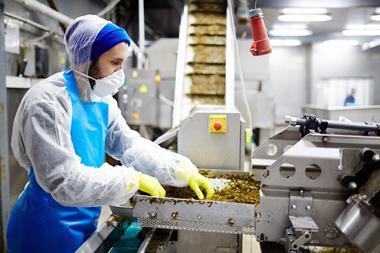![Guide to SMEs_Article image_long[3]](https://dmrqkbkq8el9i.cloudfront.net/Pictures/480xany/2/3/6/183236_guidetosmes_articleimage_long3_307021.jpg)
This is part of our free series, Guide for SMEs, which aims to provide practical, actionable advice for small food and drink brands affected by the coronavirus crisis
From 1 July, the Chancellor’s original furlough scheme will be replaced with a new, flexible version to accommodate part-time return for employees and new financial contribution requirements for employers.
To explain the new features of the flexible furlough scheme, and the key points of difference from the current one, we spoke to Cripps Pemberton Greenish senior associate Patrick Glencross.
What is flexible furlough?
Under the new scheme, employees can work for part of the week and be furloughed for the rest. The employee can work for any amount of time and under any shift pattern, whatever is agreed with their employer. Equally, employees may remain on furlough throughout the working week.
During the days or part-days the employee is on furlough, they can as now take part in training, work for another employer or carry out voluntary work. They cannot on these days undertake any work duties for their employer or an associated employer.
As now, a furloughed employee continues to accrue holiday leave and can take holiday while on furlough. Holiday pay needs to be paid at the normal rate of pay in accordance with the Working Time Regulations.
Which employees can be placed on flexible furlough?
From 1 July the only employees eligible for furlough will be those who were previously on furlough, for at least three consecutive weeks, before 30 June. There is an exception for employees returning to work after 10 June from statutory parental leave such as maternity leave.
The number of employees that a business can claim for in any claim period, from 1 July, cannot exceed the maximum number of employees it claimed for under any claim ending on or before 30 June (with an exception for employees returning from statutory parental leave).
This rule may present challenges for businesses who are looking to rotate furlough leave across a group of employees. In this situation they may need to submit weekly or fortnightly claims to HMRC, rather than a single monthly claim.
What is the process for placing an employee on flexible furlough?
The employer needs to have in place a new written agreement for employees on flexible furlough (or a collective agreement with a trade union). The flexible furlough agreement can last any amount of time, and an employee can enter into a series of such agreements. This enables businesses to manage their staffing requirements on a week by week basis.
There will no longer be the minimum three-week period for furlough, and for example an employee could be placed on flexible furlough for just one week.
When can claims be submitted to HMRC?
The first day on which claims can be made under the new scheme is 1 July, and advance claims cannot be made before this date. The final day for submitting claims under the current scheme, which ends on 30 June, is 31 July.
Claims through the HMRC portal must be for a minimum period of one week, unless the employer is claiming for the first few days or last few days in a month. Claims to HMRC can no longer cross over different calendar months. This is because of the staged introduction of employer contributions to furlough costs, which starts on 1 August 2020.
How will claims be calculated?
Claims to HMRC will be based on the proportion of hours not worked by a particular employee compared with their normal working hours. Businesses therefore need to have certainty about the number of hours the employees are working, which will present a challenge for submitting any advance claims. If the employee works more hours than reported on the claim to HMRC, the business will have to repay some of its grant.
For employees with fixed hours and pay, the reference period to be used for comparing their hours to normal working hours is the pay period before 19 March 2020, for example, February 2020 for monthly paid employees.
The reference period for employees with variable pay is the higher of:
- The average number of hours worked in the 2019-20 tax year, or:
- The equivalent calendar period in the 2019-20 tax year (eg July 2019)
What costs do employers have to contribute?
From 1 August, businesses will have to pay the employer NI contributions and pension contributions for the hours a furloughed employee does not work. From 1 September they will also have to pay 10% of the wages, and this increases to 20% from 1 October. The flexible furlough scheme ends on 31 October 2020.
Can redundancy consultations take place while on the scheme?
Businesses are able to undertake consultations about proposed redundancies while the affected employees remain on furlough. Any duties an employee carries out as an employee representative are not treated as work carried out on behalf of the employer.
It is also possible to make redundancies and give employees notice while they are furloughed, with claims made to HMRC covering (at least partially) their notice pay. A substantial number of businesses are already adopting this approach, particularly as they look ahead to the introduction of employer contributions to furlough costs.




















No comments yet